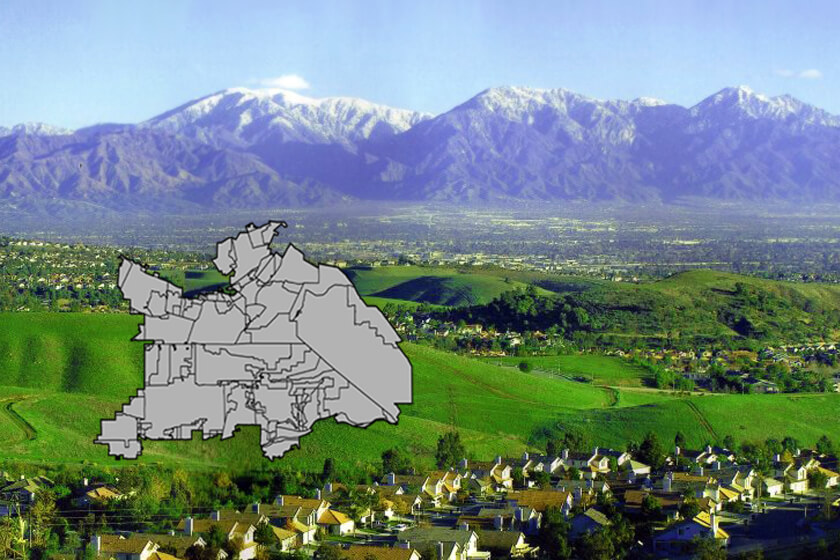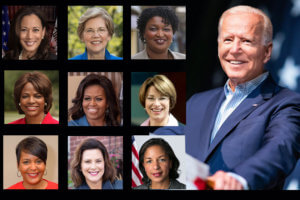West Long Branch, NJ – Republican Young Kim holds a slight edge over Democrat Gil Cisneros in the open seat contest for California’s 39th Congressional District, according to the Monmouth University Poll. More voters give a favorable rating to the GOP candidate and see her as in touch with district residents than say the same about the Democrat. These findings, coupled with lower turnout among Democratic-leaning voter blocs, offset some of the fundamental advantages Cisneros might otherwise have on key issues.
Kim is supported by 46% and Cisneros is supported by 42% of all potential voters – that is voters who have participated in an election since 2010 or have newly registered to vote (a group that represents about 85% of all registered voters in the district). Another 12% are undecided. The Republican’s edge grows, though, when applying two different likely voter models. A historical midterm model gives Kim a 51% to 41% lead over Cisneros. But even a model that projects a possible turnout surge in Democratic precincts still gives Kim a lead of 49% to 43%. Kim’s lead in the standard midterm likely voter model is outside the sample’s margin of error, but the Dem surge model margin is not statistically significant.
“This district swung from Republican to Democrat in the last presidential election. However, it doesn’t look like Cisneros is generating enough interest among those voters to overcome the district’s historical preference for Republicans at the House level,” said Patrick Murray, director of the independent Monmouth University Polling Institute.
California’s 39th district voted for Mitt Romney for president in 2012 by 4 points, but swung to Hillary Clinton in 2016 by more than 8 points. However, the Republican incumbent Ed Royce also won re-election two years ago by 14 points.
Currently, the Democrat holds a large lead among Hispanic voters (54% to 29%) while the race is very close among Asian voters (43% for Cisneros to 41% for Kim). This advantage is offset by Kim’s 58% to 36% lead among non-Hispanic white voters. Cisneros has been active in Latino philanthropic organizations while Kim, who immigrated to the U.S. as a child, would be the first Korean-American woman in Congress if elected. The district is one of the most ethnically diverse in the country, with sizable Latino and Asian communities, which combined make up a majority of all residents. However, these groups also have a much lower rate of voting. Also helping Kim’s standing is that she is leading among white voters with a college degree (53% to 41%) as well as those without (62% to 31%). This runs counter to the national trend of Democrats winning college-educated white voters.
Kim holds a double-digit lead among male voters (52% to 37%) while Cisneros has a smaller edge among female voters (47% to 40%). Kim holds an advantage among non-Hispanic white men (66% to 30%) and women (51% to 40%). Cisneros leads among both men (45% to 39%) and women (55% to 29%) from other racial and ethnic groups.
“Kim is performing much better among white women voters than Republicans in other competitive races Monmouth has polled. It might be that GOP ads about a sexual harassment charge against Cisneros are having an impact. The Me Too movement could be having an impact here, but we can’t tell for sure from this single poll,” said Murray.
Neither candidate is particularly well-known in the district, but Kim earns a net positive rating of 32% favorable and 11% unfavorable, while Cisneros gets more mixed reviews of 23% favorable and 24% unfavorable. Nearly half of CA-39 voters (45%) say that Kim, a former one-term assemblywoman, is in touch with the residents of the district while just 18% say she is not. Fewer voters (36%) say Cisneros – a lottery winner who moved into the district last year – is in touch with residents of the districts while 29% say he is not.
“This was one of the California districts where Democrats were worried that a glut of candidates running in the open primary might leave them without a nominee in November. The DCCC stepped in and elevated Cisneros to their ‘Red to Blue’ program which forced out another viable contender who ran a strong campaign against Royce in 2012. You have to wonder if the national Dems may have backed the wrong horse here,” said Murray.
Currently, 56% of CA-39 voters express a lot of interest in the November election for Congress. This includes 62% of self-identified Republicans, 60% of Democrats, and 48% of independents. Non-Hispanic white voters (63%) are more likely than Hispanic (51%) or Asian (43%) voters to express a lot of interest in the upcoming election.
Overall, 47% of district voters approve of the job Donald Trump is doing as president and an identical 47% disapprove. However, more voters strongly disapprove (40%) than strongly approve (32%). The poll finds that 62% of potential CA-39 voters say it is very important for them to cast a vote for Congress that shows how they feel about the president – including 70% of Trump opponents and 65% of Trump supporters. Voters are divided on whether they would rather see Republicans (41%) or Democrats (38%) in control of Congress. Another 19% say that party control does not matter to them.
“The problem for Cisneros is that the strongest anti-Trump voters are also among the least likely to show up in November. He’s not able to capitalize on a number of fundamentals, such as concerns about health care and dislike of the GOP tax package, that have been boosting Democrats’ chances in other competitive races this cycle,” said Murray.
When asked to choose the top issue in their vote for Congress from a list of six policy areas, 23% of CA-39 voters choose immigration and 22% pick health care. These issues are followed by gun control (15%), tax policy (14%), job creation (12%), and abortion (7%). Immigration is the top concern for Kim voters (31%), and she gets the nod among all voters as the candidate they prefer on this issue by a 35% to 25% margin over Cisneros, with 22% saying they trust both candidates equally. Health care is the most important issue for Cisneros voters (37%). However, Kim is actually trusted more to handle this issue among all voters by a 32% to 27% margin, with 21% saying they would trust both candidates equally on this issue. The poll also finds that CA-39 voters are divided on the tax reform plan passed by Congress last year – 39% disapprove and 37% approve of it.
The Monmouth University Poll was conducted by telephone from September 13 to 16, 2018 with 402 voters in California’s 39th Congressional District. The question results in this release have a margin of error of +/- 4.9 percentage points for the full sample and +/- 5.7 percentage points for the likely voter models. The error of the gap between the two candidates’ vote share (i.e. the margin of the “lead”) is +/-6.9 percentage points for the full sample and +/- 8.0 percentage points for the likely voter models. The poll was conducted by the Monmouth University Polling Institute in West Long Branch, NJ.
QUESTIONS AND RESULTS
(* Some columns may not add to 100% due to rounding.)
1/2. If the election for U.S. House of Representatives in your district was today, would you vote for Young Kim the Republican or Gil Cisneros the Democrat? [IF UNDECIDED: If you had to vote for one of the following at this moment, do you lean more toward Young Kim or more toward Gil Cisneros?] [NAMES WERE ROTATED]
| With leaners |
September 2018 |
||
| Likely Voter Models | |||
|
Full voter |
Standard |
Democratic |
|
| Young Kim | 46% | 51% | 49% |
| Gil Cisneros | 42% | 41% | 43% |
| (VOL) Undecided | 12% | 8% | 8% |
| (n) | (402) | (300) | (300) |
[QUESTIONS 3 & 4 WERE ROTATED]
- Is your general impression of Young Kim favorable or unfavorable, or do you have no opinion of her?
| Sept. 2018 |
|
| Favorable | 32% |
| Unfavorable | 11% |
| No opinion | 57% |
| (n) | (402) |
- Is your general impression of Gil Cisneros favorable or unfavorable, or do you have no opinion of him?
| Sept. 2018 |
|
| Favorable | 23% |
| Unfavorable | 24% |
| No opinion | 53% |
| (n) | (402) |
- How much interest do you have in the upcoming election for House of Representatives – a lot of interest, a little interest, or not much interest at all?
| Sept. 2018 |
|
| A lot | 56% |
| A little | 25% |
| Not much at all | 18% |
| (VOL) Don’t Know | 1% |
| (n) | (402) |
- Have you been following the campaign in your congressional district very closely, somewhat closely, or not too closely?
| Sept. 2018 |
|
| Very closely | 15% |
| Somewhat closely | 36% |
| Not too closely | 49% |
| (VOL) Don’t Know | 1% |
| (n) | (402) |
- Do you approve or disapprove of the job Donald Trump is doing as president? [Do you (approve/disapprove) strongly or somewhat?]
| Sept. 2018 |
|
| Strongly approve | 32% |
| Somewhat approve | 15% |
| Somewhat disapprove | 7% |
| Strongly disapprove | 40% |
| (VOL) Don’t know | 6% |
| (n) | (402) |
- On most issues would you say you support or oppose what President Trump is doing?
| Sept. 2018 |
|
| Support | 44% |
| Oppose | 47% |
| (VOL) Depends/both | 5% |
| (VOL) Don’t know | 4% |
| (n) | (402) |
- How important is it for you to cast a vote for Congress that shows your [support of/opposition to] President Trump – very important, somewhat important, not too important, or not at all important?
| Sept. 2018 |
|
| Very important | 62% |
| Somewhat important | 16% |
| Not too important | 7% |
| Not at all important | 6% |
| (VOL) Don’t know | 10% |
| (n) | (402) |
- Would you rather see the Republicans or the Democrats in control of Congress, or doesn’t this matter to you?
| Sept. 2018 |
|
| Republicans | 41% |
| Democrats | 38% |
| Does not matter | 19% |
| (VOL) Don’t know | 2% |
| (n) | (402) |
- Please tell me which one of the following policy issues is most important to you in your vote choice for Congress? [ITEMS WERE ROTATED]
| Sept. 2018 |
|
| Immigration policy | 23% |
| Health care policy | 22% |
| Gun control policy | 15% |
| Abortion policy | 7% |
| Tax policy | 14% |
| Job creation policy | 12% |
| (VOL) Other | 4% |
| (VOL) Don’t know | 2% |
| (n) | (402) |
- Do you approve or disapprove of the tax reform plan passed by Congress in December? [Do you (approve/disapprove) strongly or somewhat?]
| Sept. 2018 |
|
| Strongly approve | 19% |
| Somewhat approve | 18% |
| Somewhat disapprove | 12% |
| Strongly disapprove | 27% |
| (VOL) Don’t know | 24% |
| (n) | (402) |
[QUESTIONS 13 & 14 WERE ROTATED]
- Who do you trust more to work to keep health care affordable –Young Kim or Gil Cisneros, or do you trust both equally? [NAMES WERE ROTATED]
| Sept. 2018 |
|
| Young Kim | 32% |
| Gil Cisneros | 27% |
| Both equally | 21% |
| (VOL) Neither one | 7% |
| (VOL) Don’t know | 13% |
| (n) | (402) |
- Who do you trust more to handle the issue of illegal immigration – Young Kim or Gil Cisneros, or do you trust both equally? [NAMES WERE ROTATED]
| Sept. 2018 |
|
| Young Kim | 35% |
| Gil Cisneros | 25% |
| Both equally | 22% |
| (VOL) Neither one | 6% |
| (VOL) Don’t know | 13% |
| (n) | (402) |
[QUESTIONS 15 & 16 WERE ROTATED]
- Do you think Young Kim is in touch or out of touch with the residents of this district?
| Sept. 2018 |
|
| In touch | 45% |
| Out of touch | 18% |
| (VOL) Don’t know | 37% |
| (n) | (402) |
- Do you think Gil Cisneros is in touch or out of touch with the residents of this district?
| Sept. 2018 |
|
| In touch | 36% |
| Out of touch | 29% |
| (VOL) Don’t know | 35% |
| (n) | (402) |
- How important is it for you personally to get involved in politics – very important, somewhat important, not too important, or not at all important?
| Sept. 2018 |
|
| Very important | 44% |
| Somewhat important | 36% |
| Not too important | 12% |
| Not at all important | 7% |
| (VOL) Don’t know | 1% |
| (n) | (402) |
METHODOLOGY
The Monmouth University Poll was sponsored and conducted by the Monmouth University Polling Institute from September 13 to 16, 2018 with a random sample of 402 potential voters in California’s 39th Congressional District, drawn from a list of registered voters who voted in at least one of the last four general or primary elections or have registered to vote since January 2016. This includes 167 contacted by a live interviewer on a landline telephone and 235 contacted by a live interviewer on a cell phone in English and Spanish. Monmouth is responsible for all aspects of the survey design, data weighting and analysis. Final sample is weighted for region, party registration, age, gender, education and race based on state voter registration list and U.S. Census information. Data collection support provided by Braun Research (field) and L2 (voter sample). For results based on this sample, one can say with 95% confidence that the error attributable to sampling has a maximum margin of plus or minus 4.9 percentage points (unadjusted for sample design). Sampling error can be larger for sub-groups (see table below). In addition to sampling error, one should bear in mind that question wording and practical difficulties in conducting surveys can introduce error or bias into the findings of opinion polls.
| DEMOGRAPHICS (weighted) |
|
Party Registration |
| 38% Republican |
| 35% Democrat |
| 27% Neither |
|
Self-Reported Party ID |
| 34% Republican |
| 33% Independent |
| 33% Democrat |
| 49% Male |
| 51% Female |
| 24% 18-34 |
| 21% 35-49 |
| 28% 50-64 |
| 27% 65+ |
| 47% White, non-Hispanic |
|
4% Black |
| 28% Hispanic |
| 20% Asian |
|
1% Other |
| 55% No college degree |
| 45% 4-year college degree |
| 61% Orange County |
| 27% Los Angeles County |
| 12% San Bernardino County |
Click on pdf file link below for full methodology and results by key demographic groups.




